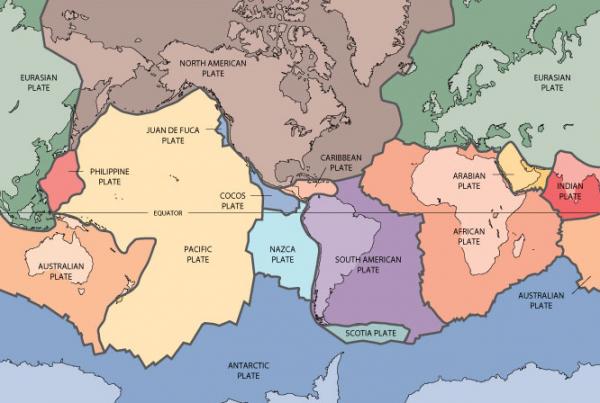
Earth's First Continents 'Oozed' From Crust

The Earth was a very different place 4 billion years ago: The planet was much hotter — uninhabitable for even the hardiest forms of life — and the familiar landscapes we know today were completely absent.
During this time, the so-called Archean Eon, the first continents were beginning to coagulate at the Earth's surface. How they got there has been one of the longest standing and most debated questions for geoscientists.
Now a team from Germany thinks it may have an answer: Rather than boiling up from the mantle, the earliest continents oozed from crust near the Earth's surface.
"This might sound a little unspectacular, but it may have serious implications as to how we think about the face of the early Earth," said team member Thorsten Nagel, a geologist at the University of Bonn.
Modeling molten mixtures
To study the oldest continental rocks, Nagel's team first had to find some.
They focused on southwestern Greenland's Isua region because it's home to some of the planet's oldest and most studied ancient rocks. What's more, Isua's old continental rocks are found next to old basalts, types of rock that makes up the ocean floor. [World's Most Famous Rocks]
Get the world’s most fascinating discoveries delivered straight to your inbox.
The Earth's oldest continental rocks probably were born from ancient, partially melted basalts, Nagel said.
Finding the two types of old rock together gave Nagel's team a chance to compare their makeup and figure out how the basalts could have melted to form the continental rocks. Basalts (and all other rocks) form different "melts" — or molten mixtures — at different temperatures and pressures, so the final composition of a rock is a clue to how deep within the Earth it formed.
Nagel and his team ran sets of computer experiments to see what would happen to the old Isua basalts if they melted at different depths. They modeled basalt melts at 62 miles (100 kilometers) deep — where most geoscientists think the oldest continental rocks formed — and melts at 19 to 25 miles (30 to 40 km) deep.
The answers they got were surprising.
"A very simple model suddenly explained all the geochemical data," said Carsten Münker, a geologist from the University of Cologne, who co-authored the study.
To subduct, or to ooze?
Using the deeper melt model — the one that most geologists currently favor — the predicted makeup of the old continental rocks did not match what's found at Isua. But when the team modeled melting basalts at the shallower depths, the compositions matched perfectly.
"The results could not be better," Nagel told OurAmazingPlanet. "One experiment resulted in a scarily good reproduction" of the old Isua continental rocks.
The real difference between the two models is that, in the deeper one, the early continents have to form within the mantle at a subduction zone, where one tectonic plate plunges into the mantle under another. But in the shallower model, the early continents "ooze" out at the surface of the Earth, completely within the crust, not the mantle.
The new shallower model opens the door to a fundamental question: Did the early Earth even have subduction zones?
Nagel isn't sure whether it did, but the answer to that question could change a lot of what scientists think they know about the early Earth.
"Our present-day planet and its topography, climate and the distribution of land and sea is shaped by modern plate tectonics," Nagel said. "The early Earth was certainly hotter than today, and this might have had fundamental consequences on how plate tectonics worked, in a hard-to-predict way."
"The way the early Earth worked might still hold a lot of surprises for us," he added.
The team's findings appear in the April issue of the journal Geology.
